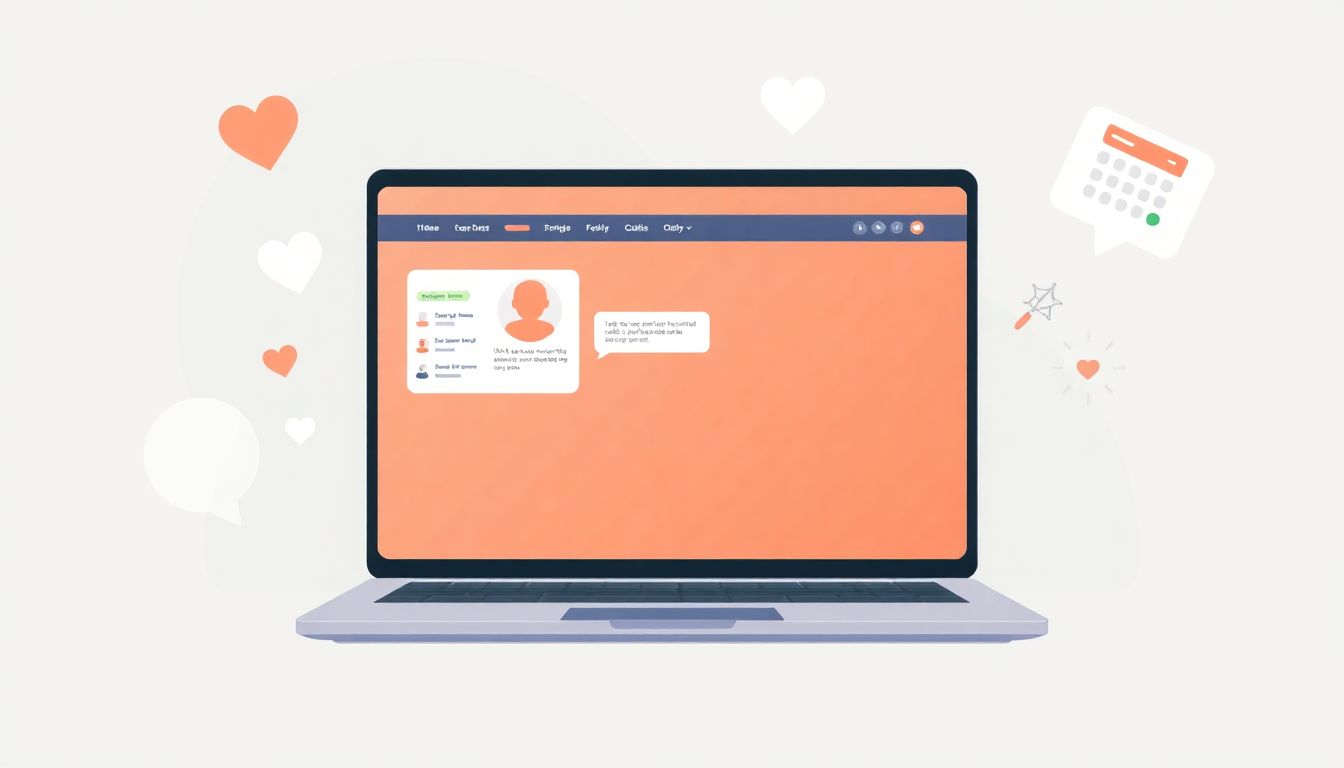Managing volunteers can sometimes feel like herding cats, right? With so many moving parts, it’s easy to get overwhelmed and lose track of who’s doing what. You’re not alone in feeling this way, and it might even seem like simpler days are a thing of the past.
But what if I told you that there’s a solution that could simplify your volunteer management process? By leveraging ChatGPT, you have the potential to streamline communication, keep everyone organized, and even boost volunteer engagement—all with a friendly chat.
Stick around, and I’ll share how ChatGPT can transform the way you coordinate your volunteers, along with some practical tips, real-life examples, and how to navigate any hiccups that might come your way.
Key Takeaways
- ChatGPT can simplify volunteer management by automating tasks and enhancing communication.
- Real-time updates keep volunteers informed and engaged, boosting participation.
- Automating repetitive tasks allows your team to focus on meaningful interactions.
- Personalized messaging fosters better volunteer relationships and morale.
- Training and support are key to overcoming challenges in using AI technology.
- Data analytics help track engagement and improve future volunteer efforts.

How ChatGPT Can Streamline Volunteer Management
ChatGPT can significantly streamline volunteer management by automating tasks and enhancing communication.
With its AI-driven solutions, organizations can improve operational efficiency and spend less time on administrative work.
For instance, using ChatGPT, you can automate volunteer recruitment processes, making it easier to attract enthusiastic participants.
Another benefit is that ChatGPT can facilitate real-time communication with volunteers, ensuring they receive timely updates and assistance when needed.
To effectively utilize ChatGPT for managing volunteers, you might consider these prompts:
- “Create a recruitment message for volunteers for our upcoming community clean-up event.”
- “Draft a message to update volunteers about schedule changes for their assigned tasks.”
- “List best practices for engaging volunteers through messaging.”
Benefits of Using ChatGPT for Volunteer Coordination
There are numerous benefits of integrating ChatGPT into your volunteer coordination efforts.
First and foremost, it improves communication between your organization and volunteers, which is crucial for maintaining engagement.
Additionally, by minimizing the administrative burden on your team, ChatGPT allows staff to focus more on meaningful interactions rather than repetitive tasks.
Many organizations find that using AI in volunteer management boosts volunteer morale and retention.
Here are some actionable prompts to help maximize volunteer coordination:
- “Outline a welcome email for new volunteers, ensuring it highlights key information and expectations.”
- “Create a survey to gather feedback from volunteers about their experiences and suggestions.”
- “Draft a thank-you message for volunteers who participated in an event, including upcoming opportunities for involvement.”
Key Features of ChatGPT for Managing Volunteers
ChatGPT comes packed with features that can transform how you manage volunteers.
It offers a user-friendly interface that allows for easy navigation, making it accessible for users of all tech skill levels.
Additionally, the AI provides instant responses, ensuring volunteers get the information they need without delay.
Another valuable feature is the data analytics capabilities, which help organizations track volunteer engagement and outcomes.
To better understand what ChatGPT can do for your volunteer program, consider these prompts:
- “Summarize the feedback I received from volunteers after our last event and suggest improvements.”
- “Generate a monthly report outlining volunteer hours logged and activities completed.”
- “List potential volunteer roles for our upcoming fundraising campaign, highlighting the skills required.”
Setting Up ChatGPT for Your Volunteer Program
Getting ChatGPT up and running for your volunteer program can be straightforward with the right steps.
Begin by identifying the specific needs of your organization and how you want to incorporate AI into those areas.
Next, follow a step-by-step implementation process to configure ChatGPT effectively for your team’s requirements.
Integrating ChatGPT with your existing volunteer management systems is crucial to ensure seamless operations.
To help you set things up, here are some prompts to use:
- “Create a step-by-step guide for volunteers on how to use the ChatGPT system for task updates.”
- “List common challenges during the implementation phase and suggest solutions.”
- “Draft a training session outline for staff on how to best utilize ChatGPT features.”

Best Practices for Engaging Volunteers with ChatGPT
Engaging volunteers effectively with ChatGPT requires a thoughtful approach that emphasizes communication, recognition, and community building.
Start by personalizing messages to create meaningful interactions. Tailor communications to reflect individual volunteer contributions and preferences.
Consider using ChatGPT to automate reminders for volunteer shifts or upcoming events to keep your team informed and engaged.
Encourage volunteers to provide feedback using a simple survey prompt. This shows that you value their opinions and are committed to improving their experience.
Here are some practical prompts to enhance volunteer engagement:
- “Create a monthly newsletter draft to update volunteers on new initiatives and recognize standout contributions.”
- “Generate a fun quiz about our organization to engage volunteers and encourage participation.”
- “Design a series of engagement activities that volunteers can participate in virtually or in person this month.”
Real-Life Examples of ChatGPT in Volunteer Management
Real-life applications of ChatGPT in volunteer management can provide valuable insights into its practical benefits.
For instance, a nonprofit organization implemented ChatGPT to streamline communication during their annual fundraising campaign.
They noticed a 30% increase in volunteer participation after using ChatGPT to send personalized reminders and updates.
Another organization used ChatGPT to gather post-event feedback from volunteers, leading to improved planning and higher satisfaction in subsequent events.
Here are some prompts you can use to explore success stories more effectively:
- “Summarize how our recent event went based on volunteer feedback and suggest improvements for next year.”
- “Highlight top-performing volunteers and draft a recognition post for social media.”
- “Compile a list of success metrics from our last volunteer campaign and analyze them for future improvements.”
Common Challenges and Solutions When Using ChatGPT
While ChatGPT is a powerful tool, there are challenges related to its implementation that organizations should address.
One common issue is ensuring that volunteers are comfortable using the technology. Offering a training session can help alleviate fears and foster confidence.
Another challenge is maintaining a human touch in interactions. Balance automated responses with personal outreach to ensure volunteers feel valued.
It’s also crucial to regularly monitor ChatGPT’s performance. Collect data on response times and engagement to identify areas for improvement.
Consider these prompts for addressing challenges with ChatGPT:
- “List common concerns volunteers might have about using AI tools like ChatGPT and suggest ways to address them.”
- “Draft an FAQ document answering likely questions from volunteers about using ChatGPT.”
- “Create a troubleshooting guide for common issues volunteers may encounter while using ChatGPT.”

Future of Volunteer Management with AI Tools Like ChatGPT
The future of volunteer management is poised to be transformed by AI tools like ChatGPT.
These technologies will not only streamline processes but also foster deeper engagement with volunteers.
As nonprofits increasingly adopt AI, we can expect enhanced personalization of volunteer experiences.
For instance, predictive analytics could help organizations anticipate volunteer needs and preferences, tailoring outreach accordingly.
Moreover, as AI tools evolve, they will become more integrated with other management systems, further simplifying the administrative workload.
This integration means organizations can better track volunteer contributions and streamline reporting processes.
Here are some prompts to consider for planning your future volunteer programs:
- “Research trends in AI tools for nonprofit organizations and summarize key findings.”
- “Draft a strategic plan incorporating AI tools into our volunteer management processes for the next five years.”
- “Analyze the potential risks and benefits of increasing AI usage within our volunteer program.”
FAQs
ChatGPT enhances communication, automates scheduling, and provides instant responses to volunteer inquiries, significantly reducing overhead. This leads to better engagement, satisfaction, and retention of volunteers in your program.
Organizations can set up ChatGPT by integrating it with existing communication tools, customizing it for specific volunteer needs, and training the model with relevant FAQs and resources for efficient support.
Best practices include tailoring interactions to volunteer preferences, providing prompt responses, regularly updating information, and encouraging feedback to continuously improve engagement and support.
Common challenges include ensuring accurate responses, maintaining user engagement, and integrating with existing systems. These can be addressed through regular updates, monitoring interactions, and leveraging user feedback for improvements.
